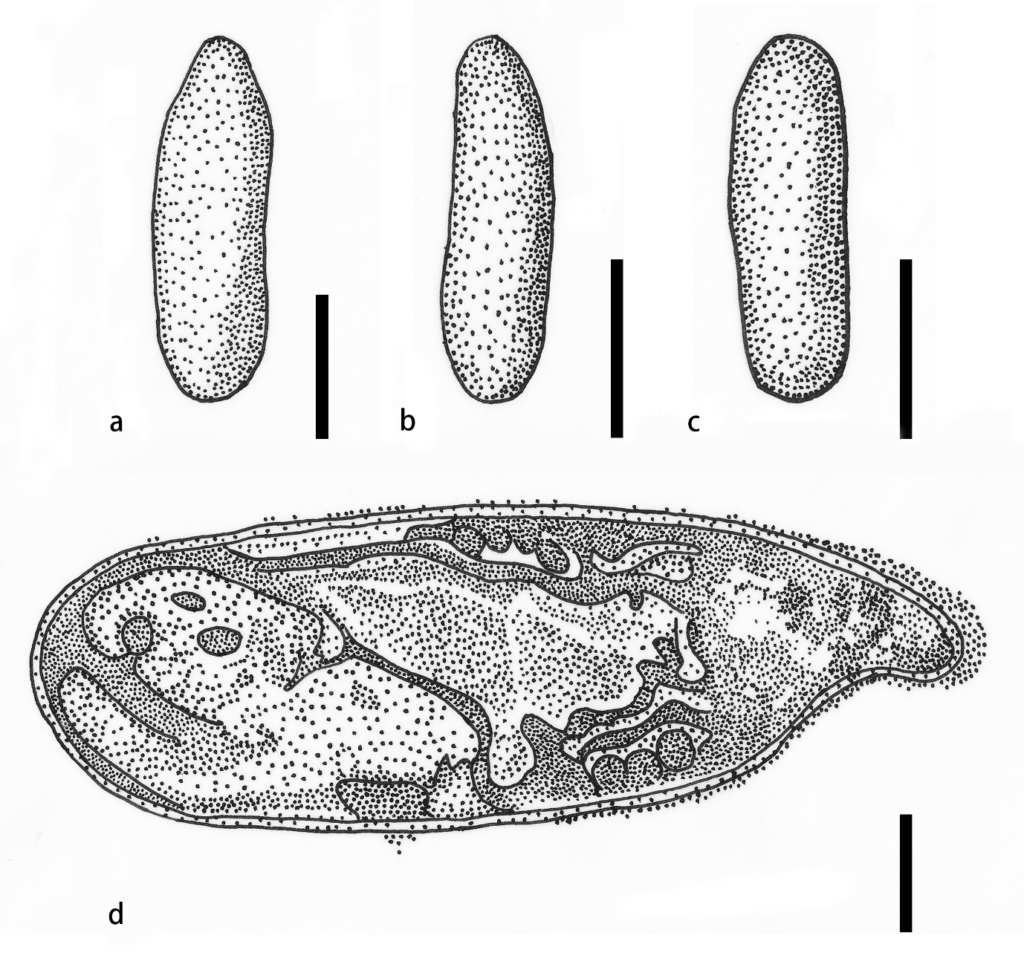Fungalpedia – Note 80 Nematocenator
Nematocenator A. Sapir, A.R. Dillman, S.A. Connon, B.M. Grupe, J. Ingels, M. Mundo-Ocampo, L.A. Levin, J.G. Baldwin, V.J. Orphan & P.W. Sternberg
Citation when using this entry: Wijayawardene et al., in prep – Fungalpedia, taxa of the basal fungi and fungus-like organisms. Mycosphere.
Index Fungorum, Facesoffungi, MycoBank, GenBank, Fig 1.
The monotypic genus Nematocenator was discovered as a fungus-related parasitic microsporidium that infects benthic nematodes at methane seeps on the Pacific Ocean floor (Sapir et al. 2014). This genus is a microsporidian which is a group of single-cell parasites somewhat related to fungi. This genus was introduced based on morphology and SSU rDNA sequence data from selected microsporidia and close relatives (Sapir et al. 2014). An editorial comment is given in Index Fungorum; “the generic name in this combination is not currently considered to apply to an organism within the fungal clade”. Bojko (2022), introduced a new microsporidia genus (Knowlespora) from pheasant shell mussels, which is sister to Nematocenator marisprofundi in neopereziida clade.
Type species: Nematocenator marisprofundi A. Sapir, A.R. Dillman, S.A. Connon, B.M. Grupe, J. Ingels, M. Mundo-Ocampo, L.A. Levin, J.G. Baldwin, V.J. Orphan & P.W. Sternberg
Figure 1 – Morphology of Nematocenator marisprofundi spores (redrawn from Sapir et al. 2014) a-c Spores. d Longitudinal cross section of spore. Scale bars: a–c = 2.5 μm, d = 1 μm.
References
Bojko J. 2022 – Systematic identity and phylogenetic analysis of Knowlespora clinchi (Knowles et al. 2022) gen. et comb. nov. from pheasantshell mussels (Actinonaiais pectorosa). Journal of Invertebrate Pathology 194, 107817.
Sapir A, Dillman AR, Connon SA, Grupe BM et al. 2014 – Microsporidia-nematode associations in methane seeps reveal basal fungal parasitism in the deep sea. Frontiers in Microbiology 43(5), 1–12.
Entry by
Tibpromma S & Dai DQ, Center for Yunnan Plateau Biological Resources Protection and Utilization, College of Biological Resource and Food Engineering, Qujing Normal University, Qujing, Yunnan 655011 P.R. China.
(Edited by Kevin D. Hyde & Nalin N. Wijayawardene)
Published online 15 September 2023
